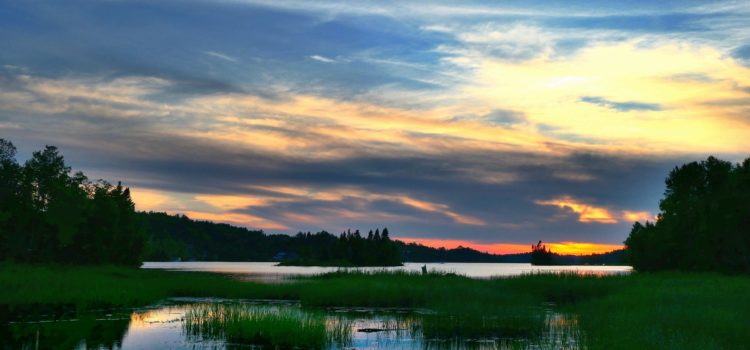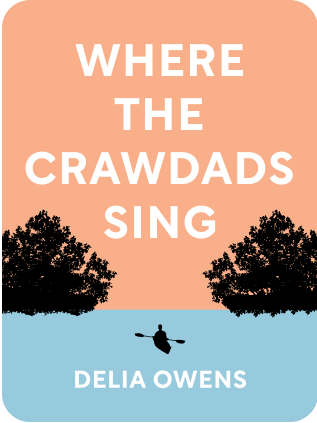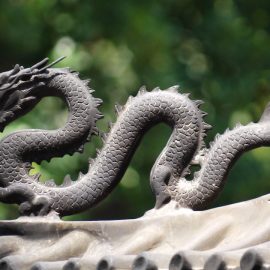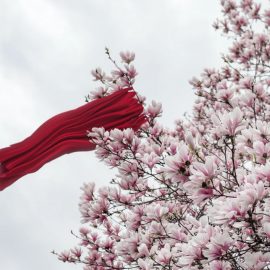

This article is an excerpt from the Shortform summary of "Where the Crawdads Sing" by Delia Owens. Shortform has the world's best summaries of books you should be reading.
Like this article? Sign up for a free trial here .
What is the significance of the Where the Crawdads Sing marsh? Why does Kya continue to live there?
In Where the Crawdads Sing, the marsh is almost its own character. The main character Kya, feels deeply connected to the marsh—more so than any human. Explore the Where the Crawdads Sing marsh and what it means to Kya and the townspeople of Barkley Cove.
The Where the Crawdads Sing Marsh: Where Kya Grows Up
A swamp should not be mistaken for a marsh. A marsh is alive, full of light, winged birds, and grasses stretching through glistening water toward the sky. The marsh meets with the sea and holds various creeks and lagoons that reach like fingers for the open water.
Weeks then months passed, and each morning, Kya still woke hoping to find Ma making breakfast. Pa stayed out of the house more and more, staying away for a week or more at a time. Without money or food, Kya ate Crisco slathered on soda crackers for nourishment. With no one around to love her, Kya turned to the land—the fields and lagoons of the marsh― for comfort. The land wouldn’t leave her, and she would never leave it.
You can see that in Where the Crawdads Sing, the marsh is important to Kya, and is a part of who she is.
The Marsh is the Mother
By the time Kya was ten, Pa was a passing mirage in the shack. He’d stay out for weeks at a time, not bothering to leave any money. Soon, she was able to count several full moons since she last saw him. She imagined all the things that could have happened to Pa, like being beaten up during a poker game or falling drunk into the swamp and drowning. Whatever had happened, Kya knew that Pa wasn’t going to come back.
Unlike with Ma, Pa leaving didn’t make her feel abandoned, just lonely. She was also scared that someone would find out he was gone and take her to live somewhere else. The marsh was her home, and the birds needed her. Leaving wasn’t an option. To avoid the authorities, she’d have to pretend Pa was still at home.
The only saving grace was that Pa had disappeared on foot, leaving the boat behind. Kya survived by digging for mussels in the sand and smashing them into a spread on crackers for each meal. But she had no more supplies. The house was dark at night without kerosene for the lamps, and she only had a few matches left. She had to find a way to get some money.
A Mysterious Benefactor
Kya turned fourteen in 1960, and although her body was becoming that of a woman, she still had the mind of a child. She hadn’t learned what came after twenty-nine and still couldn’t read. Life had continued much in the same way. She still dug for mussels and smoked fish to sell to Jumpin’, and with Mabel’s help, she’d learned how to make a garden. One of the only bad things about going to Jumpin’s was that other people saw her there. She was exposed, as was the fact that she was alone.
A year before, Kya had been lying on her porch bed when she heard voices in the night. The voices came closer to the shack, and she recognized the sounds of teenage boys, maybe five, hollering in the surrounding brush. She’d jumped from bed and tried to run out of the house before they reached her, but she was too late. The flicker of lights was already visible.
Soon, the heavy thud of hands slapping the front porch shook her heart. Each slap felt like a stab inside her body. She crouched below the solid base of the porch wall and waited. Finally, the boys ran away, cheering about surviving the wicked Marsh Girl, or Wolf Child, as some called her.
Because of this experience, Kya was quick to hide after seeing a boy slipping through the shadows of her forest one day. Crouching in the trees, Kya wondered if it was one of the boys coming back for her. She waited until he was gone, then made her way home.
When Kya came upon an old stump in the clearing, she stopped. Sticking straight up from one of the stump veins was a black feather. To the untrained eye, the feather looked like an ordinary crow’s feather, but to Kya, who’d become an expert on marsh wildlife from years of observation, it was a feather from the eyebrow of a great blue heron, a rare find for even the most ardent collector. In Where the Crawdads Sing, the marsh was Kya’s home, but also a great scientific study.
The way the feather was positioned to stick straight up was a sign that someone had been there. Kya panicked and looked around. Had the boy put it there to distract her? Was he watching her now? She ran home and locked the door behind her.
When first light broke, Kya woke with a strong urge to see the feather. It was so exquisite. The feather was still sticking out of the stump, so she grabbed it and took it home.
The next morning, Kya went back to stump and found another feather standing upright. A laugh escaped her, a rare occurrence these days, as she pulled it free from the stump. The feather was white and belonged to a tropicbird. Normally, these birds didn’t exist in this part of the coast, and she wondered how the boy had come across it and why he would give such a rare thing away.
Kya took the feather home and opened one of Ma’s old guidebooks with pictures of birds and insects from the region. Although she couldn’t read the names, Kya had inherited Ma’s artistic skills, and she drew pictures of the birds or shells that matched her specimens on brown bags. She placed each collectible on its corresponding picture and placed them on the shelves.
Another week passed before Kya found another feather in the stump. This time, the feather, long and striped, was a tail feather from a wild turkey, one of Kya’s favorite birds. She smiled and took the feather home, happy the game this boy was playing with her was still on.
The Where the Crawdads Sing Marsh Saves Kya
Kya wandered down to the beach the night before her picnic with Chase. Under the stars and rhythmic chirping and croaking of crickets and frogs, she waltzed across the sand, dreaming of all the ways she wanted Chase to touch her. The way he’d stared at her at Jumpin’s had increased her desire. It was a confident look of wanting.
When she met Chase the next morning, her desire shriveled and gave way to anxiety. Chase pulled his boat next to hers along the shore down from the marsh and reached out to help her aboard. If she took his hand, it would be the first skin-to-skin contact she’d had in years. After a moment of hesitation, she finally took it and climbed into his boat. In the beginning of their relationship in Where the Crawdads Sing, the marsh and Chase don’t fit. Kya sees this, but ignores it.
Chase took her to a beach farther down the shore, far from town and her shack. They walked along the sand, not talking and not holding hands, but every few feet, their fingers brushed between them. Kya worried that Chase was only hanging out with her out of curiosity, rather than real interest, but she reasoned it didn’t matter. All she wanted from Chase was a reprieve from loneliness. Her heart would never be involved enough to get hurt.
They sat on the sand, and Chase picked up an unusual shell. Kya quickly identified the name of the species and said it was rare to see it so far north. Chase stared at her confused, obviously not expecting the Marsh Girl to speak like a biologist. The information didn’t impress him one bit. He just thought the shell was cool. He gave it to Kya, since she knew so much about it.
Chase spread a blanket and pulled out the lavish picnic he’d brought: fried chicken, ham, biscuits, potato salad, and cake. He gave Kya a soda, the first in her life. Kya knew Chase’s mother was likely the one who’d packed the picnic, and she knew there was a good chance she’d had no idea who it was for. As they ate, they spoke of the water and seabirds flying above, nothing deep or personal.
They hadn’t touched the whole meal, but when it was over, Chase leaned in for a kiss. His hands fluttered softly against her face and neck, then one hand slid over her blouse toward her breast. They tipped backwards, and suddenly Chase was on top of her. In one motion, he positioned himself between her legs and pulled her blouse up. Kya pushed against his chest, wriggled free, and yanked her shirt down. Her black eyes burned into him.
Chase spoke calmly, telling her everything was okay. He tried to touch her face, but Kya jumped up. She’d imagined him touching her the night before and understood mating rituals of the wildlife in the marsh, but sex was different. Her only experience was the close call with Tate, and she realized she wasn’t ready. She should have known this was all Chase wanted. Men were no different than any other male species. They only came around when it was time to mate.
It was true—initially Chase had only asked her out so he could be the first to bag the Marsh Girl. But after seeing her eyes ablaze, he was struck by her beauty and raw power. He apologized and tried to get her to calm down, but Kya turned and ran into the woods. She followed the pattern of blackbirds until she was back by her boat. She was ashamed of how much she’d wanted to be touched, so much that she’d made herself easy prey.
When Kya motored up to his boat, Chase again apologized. He offered to show her a view of the marsh from the top of the fire tower. The fire tower stood in the swamp on the other side of Barkley Cove, a place Kya had never ventured before. Once at the top, Kya greeted the full form of her true soulmate for the first time. The marsh was beautiful in its entirety.
In Where the Crawdads Sing, the marsh is alive, living and breathing. It’s where Kya grew up, and has become her family. The Where the Crawdads Sing marsh is beautiful to Kya, and she vows to protect it as it protected her.

———End of Preview———
Like what you just read? Read the rest of the world's best summary of Delia Owens's "Where the Crawdads Sing" at Shortform .
Here's what you'll find in our full Where the Crawdads Sing summary :
- How Kya Clark's abandonment as a child affected her through her entire life
- How Kya discovered love despite steep obstacles
- The murder trial that embroiled Kya's town, and the ultimate truth behind the murder






